Optimizing your website for search engines is the cornerstone of driving organic traffic and ensuring online success. Whether you’re launching a new site or revisiting an existing one, having a clear, actionable SEO checklist is essential to lay a strong foundation for visibility and growth. From keyword research to technical fixes, each step is vital in improving your site’s ranking on search engine result pages (SERPs). This guide outlines a comprehensive SEO checklist tailored for beginners, helping you tackle the essentials of website optimization with ease and efficiency.
| Points | Short description |
|---|---|
| Technical SEO | |
| Ensure Mobile-Friendly Design | Verify that the website is responsive and works well on all devices. |
| Optimize Page Load Speed | Aim for under 3 seconds of load time by optimizing images, scripts, and server performance. |
| Install SSL Certificate (HTTPS) | Ensure the site is secure with SSL encryption to improve trust and rankings. |
| Check Site for Crawlability | Use tools like Google Search Console to check that search engines can crawl the site effectively. |
| Create a Robots.txt File | Specify which parts of the site search engines should or should not crawl. |
| Submit Sitemap to Search Engines | Submit XML sitemaps to Google Search Console and Bing Webmaster Tools. |
| Fix Broken Links | Use tools to identify and fix any broken internal or external links. |
| Enable GZIP Compression | Compress text files to reduce server load and improve site speed. |
| Use Canonical Tags | Prevent duplicate content issues by using canonical tags on similar pages. |
| Add Structured Data (Schema Markup) | Implement schema markup to help search engines understand your content better. |
| Create Clean URLs | URLs should be descriptive, short, and readable, using hyphens instead of underscores. |
| Check for Redirect Issues | Ensure there are no unnecessary redirects, especially 302 redirects. |
| Set Up Google Analytics | Install Google Analytics to track website performance and user behavior. |
| Verify with Google Search Console | Make sure your website is verified in Google Search Console for better performance insights. |
| Use HTTP/2 Protocol | Enable HTTP/2 for faster delivery of content. |
| Optimize JavaScript and CSS | Minimize and defer non-critical JavaScript and CSS to improve load time. |
| Avoid Duplicate Content | Ensure content is unique and avoid plagiarism that can harm SEO. |
| Enable Browser Caching | Configure caching headers to allow browsers to store content for faster loading on repeat visits. |
| Use Accelerated Mobile Pages (AMP) | Implement AMP for faster loading on mobile devices, especially for content-heavy sites. |
| Fix Crawl Errors | Address crawl errors in Google Search Console to ensure that all pages are indexed properly. |
| Optimize for Core Web Vitals | Focus on metrics like loading, interactivity, and visual stability to enhance user experience. |
| Monitor Uptime | Ensure the website is consistently live and avoid downtime to maintain rankings. |
| Use CDN (Content Delivery Network) | Distribute content across multiple servers worldwide to improve speed. |
| Optimize Server Location | Ensure the server is located near your target audience to reduce latency. |
| Prevent Indexing of Low-Value Pages | Use “noindex” on pages like search results, login, and thank-you pages. |
| On-Page SEO | |
| Title Tag Optimization | Include primary keywords within 60 characters in your title tag. |
| Meta Description Optimization | Write compelling meta descriptions under 160 characters, incorporating key terms. |
| Header Tags (H1, H2, etc.) | Use header tags hierarchically for better content organization and readability. |
| Optimize Image Alt Text | Add descriptive, keyword-rich alt text for all images. |
| Keyword Research | Perform thorough keyword research to identify high-value terms. |
| Content Optimization | Use primary and secondary keywords naturally throughout the content. |
| Use Keywords in URLs | Include relevant keywords in your page URLs for better SEO. |
| Internal Linking | Link to relevant pages within your website to help with navigation and link equity distribution. |
| Outbound Linking | Link to authoritative external sources to add value to your content. |
| Content Length | Aim for comprehensive content (1,500+ words) where appropriate, as long-form content tends to rank better. |
| Image Optimization | Compress images to reduce file size and improve load times while maintaining quality. |
| Use LSI Keywords | Include Latent Semantic Indexing keywords related to your target keywords. |
| Engaging Content | Focus on creating engaging, high-quality content that adds value to visitors. |
| Improve Readability | Write in a clear, concise, and easy-to-read style, breaking up text with headings and bullets. |
| Use Structured Data for Rich Snippets | Implement rich snippet markups to get more visibility in search results. |
| Update Old Content | Regularly update outdated content with fresh information and relevant keywords. |
| Multimedia Content | Add videos, infographics, or podcasts to engage users and increase time on page. |
| Optimize for Featured Snippets | Format content to answer common questions directly and increase your chances of a featured snippet. |
| Optimize for Local SEO | Add location-based keywords to improve visibility in local searches. |
| Create a 404 Page | Design a user-friendly 404 error page that encourages visitors to stay on your site. |
| Add Social Sharing Buttons | Include social media buttons to make it easy for users to share your content. |
| Fix Typos and Grammar | Proofread content to eliminate spelling mistakes or grammatical errors. |
| Use Breadcrumbs | Implement breadcrumb navigation to improve the user experience and internal linking. |
| Call to Action (CTA) | Ensure clear and actionable CTAs are included on relevant pages to drive conversions. |
| Avoid Keyword Stuffing | Use keywords naturally and avoid overloading pages with too many keywords. |
| Develop share-worthy content to expand your reach. | |
| Focus on Search Intent | Create content based on user intent, whether informational, transactional, or navigational. |
| Answer Frequently Asked Questions (FAQs) | Address common queries in an FAQ section to improve visibility. |
| Write Engaging Headlines | Craft catchy headlines that include keywords and capture attention. |
| Content Diversification | Include various forms of content like blogs, guides, case studies, etc., to engage users. |
| Leverage User-Generated Content | Encourage reviews, comments, and forums to boost engagement and credibility. |
| Create Shareable Content | Focus on specific long-tail keywords with lower competition but higher conversion potential. |
| Add Long-Tail Keywords | Include the address, phone number, and local keywords for better local SEO. |
| Use Storytelling | Engage users with storytelling to increase time on site and build a stronger connection. |
| Update and Repurpose Content | Repurpose old content in different formats like videos, podcasts, or slideshows. |
| Target Zero-Click Searches | Structure content to answer questions directly in featured snippets. |
| Use Local Business Information | Include address, phone number, and local keywords for better local SEO. |
| Incorporate Testimonials | Add customer testimonials to build trust and credibility. |
| Add Case Studies | Use case studies to showcase your expertise and provide proof of value. |
| Focus on Content Freshness | Regularly update content to ensure it remains relevant. |
| Create Comprehensive Guides | Develop in-depth guides on key topics to become a pillar of your industry. |
| Develop a Blog Strategy | Regularly post fresh content to keep the site dynamic and attract repeat visitors. |
| Use Lists and Bullet Points | Improve scannability by breaking content into digestible lists. |
| Leverage Influencer Marketing | Collaborate with influencers to boost content visibility. |
| Offer Free Tools/Resources | Provide valuable tools or resources that visitors can access for free. |
| Engage with Comments | Interact with readers in the comments section to improve engagement and content freshness. |
| Optimize Content for Voice Search | Structure content to answer conversational queries, ideal for voice search. |
| Monitor Competitor Content | Keep an eye on what competitors are publishing and find ways to create superior content. |
| Use FAQ Schema | Implement FAQ schema to help search engines display your FAQ content in search results. |
| Encourage Social Proof | Display statistics, reviews, and user-generated content to build trust and authority. |
| Highlight Key Information | Ensure your most important content is easily accessible and visually prominent. |
| Off-Page SEO | |
| Build Quality Backlinks | Focus on acquiring backlinks from reputable, authoritative sites in your niche. |
| Disavow Toxic Backlinks | Regularly review and disavow harmful backlinks that may hurt your rankings. |
| Guest Blogging | Write guest posts for reputable sites to build links and drive traffic back to your site. |
| Leverage Social Media | Promote your content on social platforms to drive traffic and build brand awareness. |
| Engage in Online Communities | Participate in forums like Quora or Reddit to provide value and include links back to your content. |
| Build Local Citations | List your website on local business directories and citation sites for better local SEO. |
| Encourage Reviews | Collect positive reviews on platforms like Google, Yelp, and Trustpilot to build trust. |
| Influencer Outreach | Reach out to influencers in your industry to help amplify your content. |
| Promote Content via Email | Send newsletters and promotional emails to your subscriber list to increase traffic. |
| Use Content Aggregators | Submit your content to content aggregators like Medium or Scoop.it for additional exposure. |
| Collaborate with Industry Partners | Work with partners |





